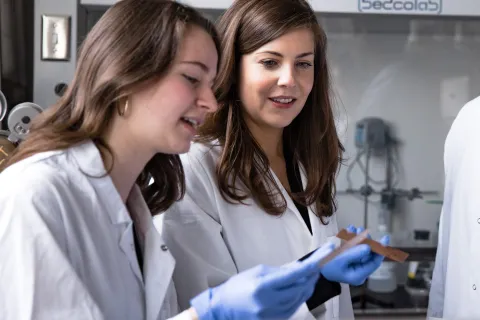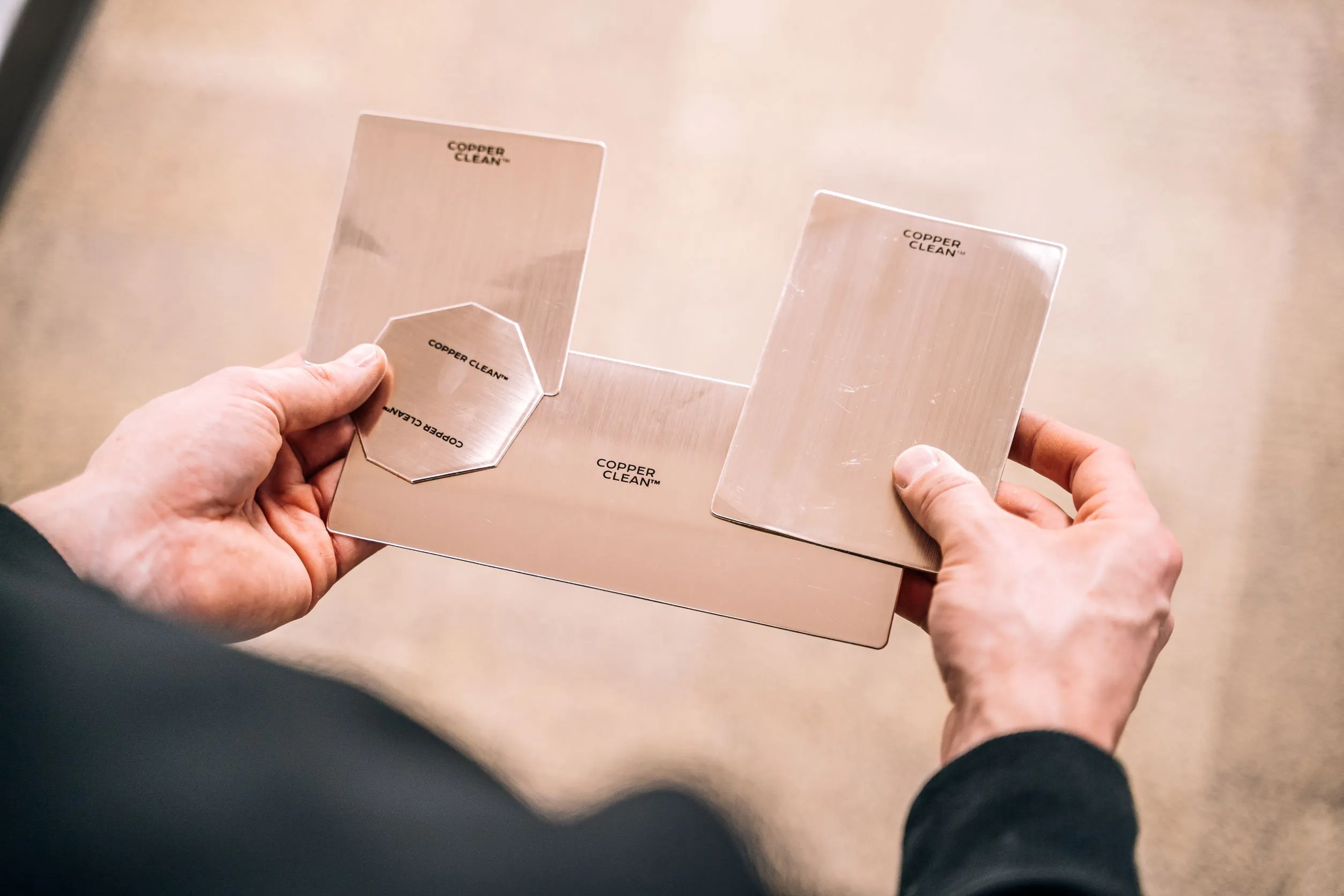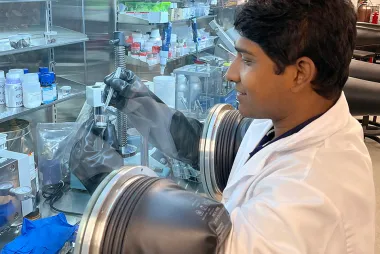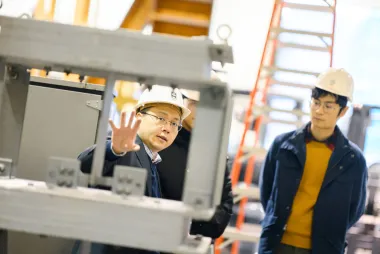More copper, less infection
Take a look around some of UBC Applied Science buildings, and you might notice there’s some innovation at work.
At a closer glance, there are now more than 400 antimicrobial copper patches on door handles and railings in buildings including the Chemical and Biological Engineering building, the Pulp and Paper Centre, and the School of Nursing.

Take a look around some of UBC Applied Science buildings, and you might notice there’s some innovation at work.
At a closer glance, there are now more than 400 antimicrobial copper patches on door handles and railings in buildings including the Chemical and Biological Engineering building, the Pulp and Paper Centre, and the School of Nursing.
Research has shown that, when installed on high-touch surfaces, copper will eliminate up to 99.9 per cent of harmful bacteria within two hours of contact. Copper’s rapid killing mechanism prevents cells from replicating while significantly reducing the number of bacteria living on the surface.

The installation is part of Teck’s Copper & Health program. As a major copper producer, Teck has committed itself to raise awareness, and advocate for the use of copper as a first line of defense against infections resulting from surface based-transmission of pathogens in busy, public spaces.
"It's important that we work with industry leaders like Teck, who display a commitment to innovation and sustainability,” said Professor James Olson, Dean, UBC Faculty of Applied Science. "When we work together, we're able to quicken our research and see its impact in the real world.”
“We are proud to partner with UBC Applied Science on this installation of antimicrobial copper in high-traffic spaces which creates a safer environment for students and staff,” said Teck President & CEO Don Lindsay.
This builds on Teck-funded research that is already taking place in a UBC lab. Materials engineering experts Dr. Amanda Clifford and Dr. Edouard Asselin are diligently developing an advanced copper coating, that will kill certain types of bacteria quicker than unmodified copper. It is designed to help reduce the spread of aggressive infections contracted through contaminated surfaces.
Experimenting with an innovative process called "electrodeposition," the new coating could potentially offer a low-cost solution for hospitals and other health-care facilities looking to implement antimicrobial copper on high-touch surfaces, such as doorknobs and bed rails.
More than 200,000 healthcare acquired infections happen across Canada every year resulting in more than 12,000 deaths.
Innovation is taking place across industries to protect Canadians with antimicrobial copper. Most recently, UBC and Vancouver Coastal Health partnered with Vancouver and Toronto transit on a Teck-funded copper research project. The study, which began its second phase in September 2021, is testing copper surfaces on buses and SkyTrain cars in Metro Vancouver, as well as buses, subway cars and streetcars in the Greater Toronto Area.
Every two months over a one-year period, a medical microbiology team from Vancouver Coastal Health is analyzing samples collected from both copper and non-copper surfaces on the transit vehicles. Researchers from UBC are supporting this testing, and analyzing the durability of the three products as they age over the course of the year.

One of the primary aims of Teck’s Copper & Health program is to improve health outcomes for people and communities. This is a goal that aligns with UBC Applied Science’s own commitment to work closely with partners in order to develop and implement innovations that support healthy, safe and sustainable communities for people both locally and globally.
Teck has been a long-time partner of UBC Applied Science. In addition to the copper patch installation and copper research currently underway, Teck is one of the largest employers of UBC Engineering co-op students, and has contributed $3.8 million of research funding to the faculty since 2002.


